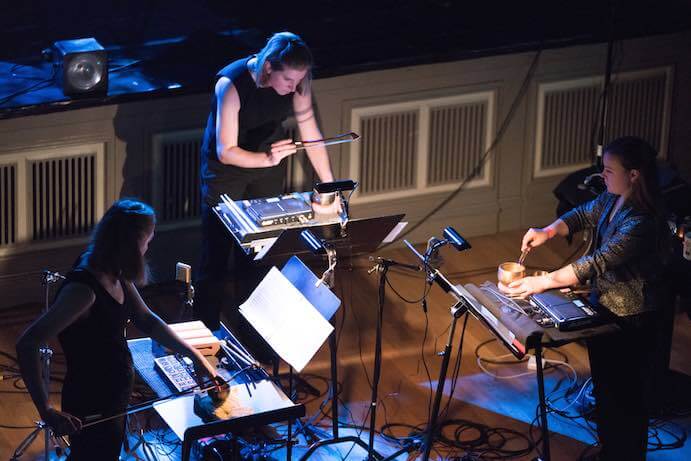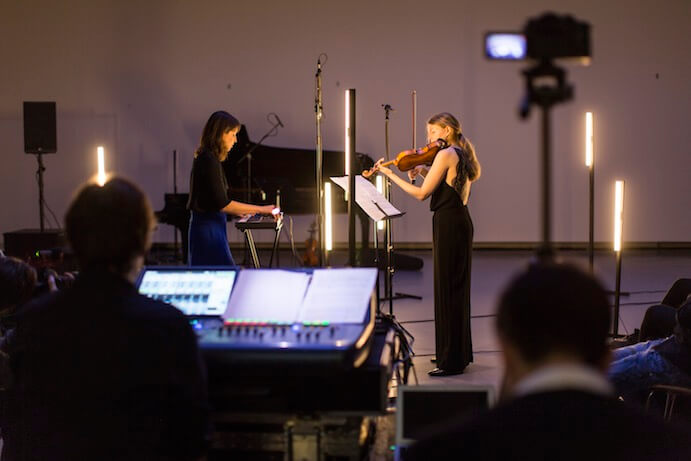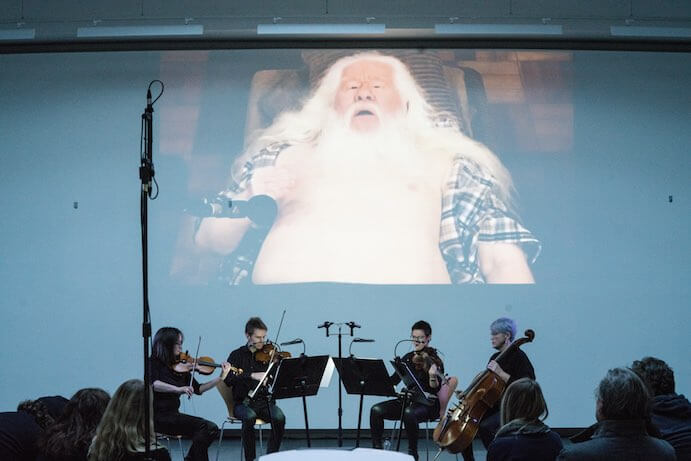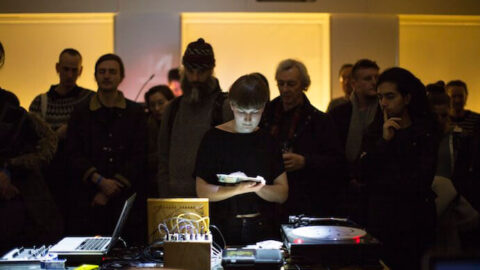The week before the 2018 Borealis festival, the PRS Foundation announced its new Keychange initiative, which is “empowering women to transform the future of the music industry and encouraging festivals to achieve a 50:50 balance by 2022.” While a number of contemporary music festivals have committed to this initiative—the BBC Proms, Huddersfield Contemporary Music Festival, Spitalfields music, Tallinn Music Week—Borealis has already achieved gender-balanced programming and is committed to maintaining it. Additionally, Borealis is now working to expand equitable programming to include more artists of color, and the festival leadership is beginning to revise the way they talk about gender in order to include non-binary artists who are not necessarily represented by a “50:50 balance.”
What is remarkable about Borealis is that the festival leadership made a conscious decision to prioritize equitable programming years before this recent wave of societal pressure. By operating ahead of the curve, Artistic Director Peter Meanwell and Managing Director Tine Rude have created a festival where gender balance doesn’t feel contrived, doesn’t feel like tokenism, and proves that curators do not need to sacrifice quality in order to program inclusively. In fact, some of the most striking performances throughout the festival were the ones that prominently featured equal gender representation among the composers and the performers.

On March 9th, the percussion trio Pinquins (Johanne Byhring, Sigrun Rogstad Gomnæs, and Ane Marthe Sørlien Holen) demonstrated extraordinary versatility in a program that involved a myriad of instruments, electronics, singing, movement, and audience participation. Ingvild Langgård’s The Sound of Superpowers, Part 1 progressed through pounding toms and clanging breakdrum to dreamy, meditative irregular meter vibraphone to a synth-driven finale which juxtaposed mallet percussion against the groove. Danielle Dahl’s c2_dyp_blip.test.wav took the audience to a subtler, more delicate sonic space as ethereal sustained tones—both acoustic and electronic—laid the foundation for rattling temple blocks and the rhythmic flickering of a strobe light. Brice Catherin’s 36,000 Years Alongside Baubo recruited 21 volunteers from the audience to play crotales and prepared recorders. After a brief albeit hilarious practice run that resembled something of a third grade music class, the work began with metallic clanks, hissing, and humming before launching into a cacophony of melodica cluster chords and shimmer bells. Against a backdrop of primordial drones, interjections of recorders and crotales from the audience added a magnificent spatial component to the work.
Later that evening at the Bergen Kunsthall, Norwegian artist Jenny Berger Myhre gave one of the most intimate and personal performances of the festival. Her 30-minute set in a dimly-lit gallery space invited the audience to gather around a table with a laptop, a record player, a cassette player, and spinning tops as she created a tender collage of birdsongs, field recordings of people talking and children laughing, whistles, and live singing accompanied by guitar. Later in the festival on a panel titled What Future? What Female?, Myhre spoke about the process of turning artistic doubt into a source of power in her work, and this reflective and genuine spirit had been deeply-felt throughout her performance.

On March 10th, Duo Hellqvist/Amaral (violinist Karin Hellqvist and pianist Heloisa Amaral) began with driving, growling low tones in Daniel Moreira’s The Delivery, which featured a video of a Go-Pro mounted on a violin case. Moments of crystalline harmonics and sparkling high register piano were contrasted with hammering electronic bass tones that vibrated the duct work in the multi-story ceiling room. Catherine Lamb’s Prisma Interius VII acted as a complete sonic pivot from this explosive opening as the performers, surrounded by a forest of light pillars, made their way through a minimalist microtonal meditation of slow pitch bends that drew extreme attention to the expansion of range and timbre. Many in the audience listened with eyes closed as Hellqvist and Amaral displayed great patience, pacing, and intonation. Marina Rosenfeld’s My red, red blood set the performers behind a screen as the contour of a handwritten letter laid across a staff became the drawn out, haunted melody. Prepared piano and extended violin techniques made the instruments sonically unrecognizable for most of the work, which created an abstract aural experience.
Another highlight of the festival appeared on the BIT20 String Quartet’s new chamber music program on March 11th. Kristine Tjøgersen’s Mistérios do Corpo draws inspiration from Hermeto Pascoal’s work by the same name, in which Pascoal uses his body as an instrument. The first half of the work introduced a catalog of percussive extended string techniques—varied pizzicato articulation, modified bowings, and wiggling pencils between strings—while the second half of the work employed these techniques in a string quartet transcription of Pascoal’s fiendishly difficult body percussion work, which accompanied the original video of Pascoal’s performance. The laugh-out-loud result put the brilliant technical ability of the quartet on full display while engaging the audience in a clever way.

When discussing women artists, there is an inherent danger of forcing their work into a gender first, composer/performer second narrative. However, Borealis has cultivated an environment where it is not necessary to treat the all female performing ensemble or the lone woman composer as a special anomaly grounded in gender identification with little to no consideration of performance quality. Throughout the festival, inclusive performances proved that equitable programming yields a greater diversity of artistic voices, and that these voices can encourage thoughtful and critical conversations based on the caliber of their output alone.
























